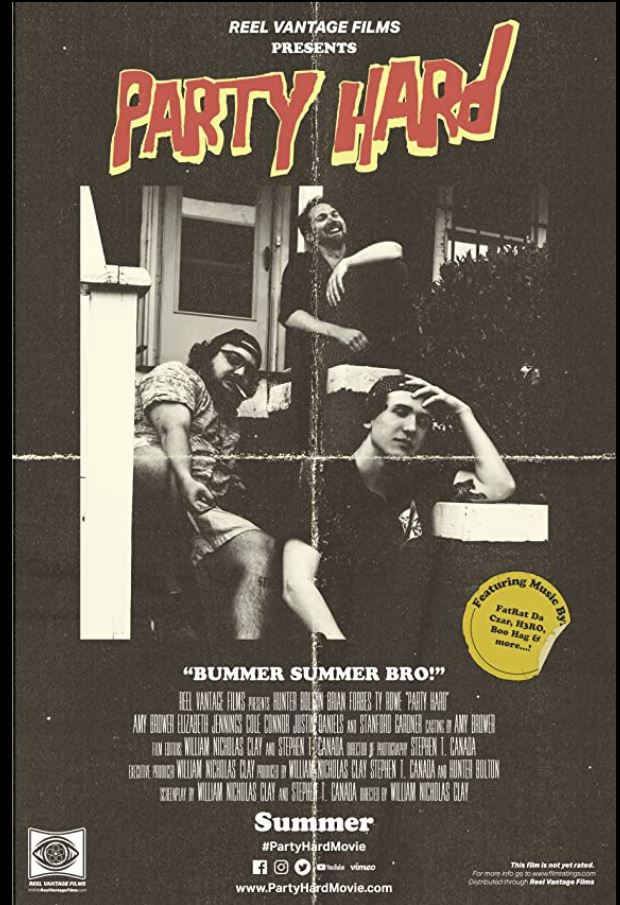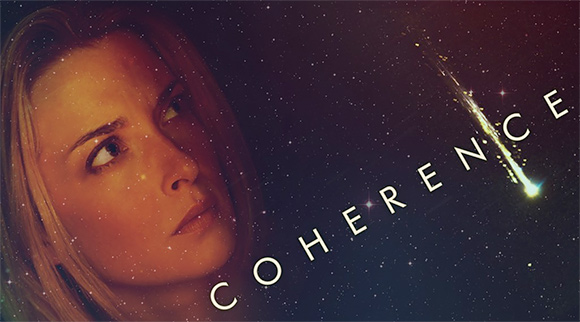PARTY HARD (2020): A Millennial’s Lost in Translation

Making it out on your own in life is a significant and difficult step to take in life. It’s even harder when you move to another place to escape any emotional baggage you may have. For many young folk out there, it’s difficult to navigate the world with no long term plans. Directed by William Nicholas Clay and written by both Clay and Stephen T. Canada, PARTY HARD addresses this issue which plagues many Millennials today.
Chandler (played by Hunter Bolton) is a young man who moves to a new city to make a fresh start for himself. However, after struggling to face his inner turmoil, he moves back to his hometown and begins a long night partying with his old friends, Jules (played by Brian Forbes) and Ty (played Ty Rowe). As the night goes on and the trio frequent bar after bar getting progressively more and more drunk, Chandler begins to ponder on his mistakes and make peace with his past.

Rather than give a straightforward narrative, the film instead is very freeform in its delivery of the plot with events happening on a whim rather than having a direct cause and effect. The focus of the film is on the lead characters and their journey during the night through interactions among themselves and others. With the characters being the focus, it is a good thing that the characters are engaging. Chandler is relatable who struggles with regret stemming from his past mistakes, Ty is a chill person and Jules balances out the group with his more aggressive “life of the party” personality. In addition to the main being enjoyable, the side characters were also compelling, especially Lily, played by Amy Brower, who subverted audience expectations of the Manic Pixie Dream Girl trope, while providing helpful advice to Chandler despite not solely existing to change his outlook on life.
The film manages to capture the feeling of the night life scene very well, as shown through the cinematography, which steadily gets more shaky as the film goes on. Another aspect of the cinematography I noticed was what I call the “artistic blur” used near the end when the trio were driving. The sequence was very reminiscent of a lot of films from the 1990s where it was usually used as transitional shots, but here, it’s perfect for conveying how dizzying the night was for our trio. Regarding the sound design, PARTY HARD reminded me a little bit of Fight Club. Usually scenes in a crowded restaurant or bar will have the background noise lowered down while focusing on dialogue among major characters. However, much like Fight Club, PARTY HARD keeps the background noise almost as loud as the character dialogue. While this can be seen as a risky move, as the dialogue can sound muffled, in PARTY HARD’s case, it adds a sense of realism while still keeping the dialogue audible.

One of the most creative aspects of the film was the music. Most if not all of the soundtrack was composed of original scores. This is especially impressive considering the quality of the songs, such as the aptly-named title song PARTY HARD. If I didn’t know the song was an original song, I would’ve almost thought it was from Kendrick Lamar! Both Miles Kendrick and Ty Rowe have serious talent and singing ability and I wish to see more of their work in the future!
PARTY HARD was made on a budget of $6,000 and shot over the course of two and a half weeks. Director William Nicholas Clay and cinematographer Stephen T. Canada wanted to create a film that was a hangout film set in their hometown. Previously, the two worked on various short films and music videos, with PARTY HARD being their first feature film. Upon looking at the hectic bar-hopping scenes, I can see how both Clay and Canada’s experience working on music videos came into play, turning something that would be considered mundane into a more dramatic activity.

Overall, PARTY HARD is a well-made film with a solid production and cast. It was made to be the ultimate ‘hangout’ movie and it is very successful in that endeavor. Despite its boisterous appearance consisting of loud bar music, crass language and disjointed storytelling, at the heart of the film lies a very solemn issue that plagues the hearts of many young folk today. While it may not have the production value of a bigger budget film such as Lost in Translation, it has similar feel and story beats to the iconic Academy Award winner. For anyone who suffers from guilt over their past, or just wants a heartfelt hangout film, this movie is worth checking out.
Co-Written by: Owen Gonzalez








